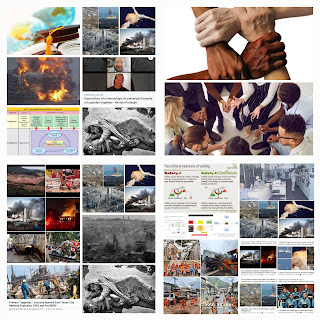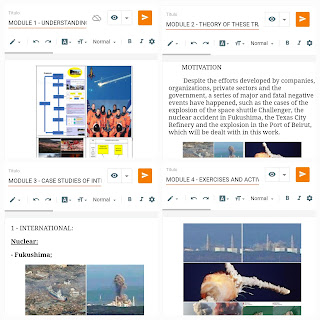Review
Barry Turner: the under-acknowledged safety pioneer
Kym Bills 1,*, Leesa Costello 1 and Marcus Cattani 1
Abstract: Barry Turner’s 1978 Man-made Disasters and Charles Perrow’s 1984 Normal Accidents were seminal books but a detailed comparison has yet to be undertaken. Doing so is important to establish content and priority of key ideas underpinning contemporary safety science. Turner’s research found socio-technical and systemic patterns that meant that major organisational disasters could be foreseen and were preventable. Perrow’s macro-structuralist industry focus was on technologically deterministic but unpredictable and unpreventable ‘system’ accidents, particularly rare catastrophes. Andrew Hopkins and Nick Pidgeon respectively suggested that some prominent writers who wrote after Turner may not have been aware of, or didn’t properly acknowledge, Turner’s work. Normal Accidents didn’t cite Turner in 1984 or 1999. Using a methodology involving systematic reading and historical, biographical and thematic theory analysis, a detailed review of Turner’s and Perrow’s backgrounds and publications sheds new light on Turner’s priority and accomplishment, highlighting substantial similarities as well as clear differences. In a previously unpublished letter, Perrow confirmed reading Man-made Disasters while writing Normal Accidents. Turner became better known after a 1997 second edition but under-acknowledgment issues continued. Ethical citation and potential reasons for under-acknowledgment are discussed. It is concluded that Turner’s foundational importance for safety science should be better recognised.
Turner:
Barry Turner’s landmark book Man-made Disasters [1] was based on his PhD dissertation ‘The Failure of Foresight’ at the University of Exeter [12] that used ‘grounded theory’ to analyse 84 official British accident inquiry reports in various industries. In MMD, based on common patterns derived from some very different high-hazard industry cases, Turner proposed a ‘socio-technical’ organisational model of disasters and accidents. This was to understand ‘failures of foresight’ and included a sequence highlighting pre-accident work and culture norms, ‘incubation’ of accident precursors, a ‘precipitating event’, and post-inquiry readjustment. Alongside this was a systemic explanation incorporating organisational hierarchy and structure, ‘negentropy’ and ‘anti-tasks’, ‘system forgiveness’ and ‘deviation amplifying feedback’. An accident analysis diagram was developed to assist understanding and learning [1]. Turner sought to provide a ‘general framework’ for “understanding disasters as a socio-technical problem, with social, organizational and technical processes interacting” with emphasis in MMD “upon the more neglected social elements” which included the structure of
information and communication in organisations with social and cultural context [1] (pp. 2-3, 5).
Before Turner, all disasters and major accidents, and not just those that were purely natural like earthquakes, were largely treated as unique or random, so the focus was on response not prevention.
MMD was the seminal work that demonstrated that it was possible to identify precursors and seek to improve foresight and prevention. Turner died in 1995 aged 57 and a second edition of MMD with an added chapter and updated language and references was completed by his close colleague Nick Pidgeon using notes Turner had left for the revision [10] (pp. xviii-xix).
Turner was born in 1937 into a working class family in Birmingham in England. He studied and worked in engineering before completing a degree in sociology in 1966.
The initial MMD sequence model was based on the analysis of the official inquiries into three disasters: Aberfan (a coal mining waste tip collapse onto a Welsh school and village in which 144, mostly children, died), Hixton (a rail level crossing passenger express train collision with a slowmoving truck carrying a 120-ton transformer - 11 died, 45 injured) and Summerland (a leisure centre building fire on the Isle of Man - 50 died, 80 injured). The model comprised six stages, Barbosa (2023):
1. Normal state, initially accepted beliefs about the world and dangers. Precautionary norms in laws, codes of practice, or traditional customs.
2. Incubation period, accumulation of a set of unnoticed events at odds with accepted beliefs about hazards and norms for controlling them.
3. Precipitating event, disaster begins, general perception changes, surprise, and disturbances occur.
4. Events escalate, consequences become apparent, and collapse occurs.
5. Rescue and rescue.
6. Complete cultural readjustment. Investigation. Beliefs and norms of precaution are adjusted to suit the newly acquired understanding of the world (“this must never happen again”).
Perrow:
As an established Professor of Sociology, Perrow came to accident and disaster studies in August 1979 when he was invited by a former PhD student to provide social science input for the US Presidential Commission of Inquiry into the serious accident on 28 March 1979 at the Three Mile Island nuclear power station (TMI). Utilising his organisational background, review of initial TMI Inquiry witness transcripts, and assistance from graduate students, Perrow developed his core argument for TMI inside a month [2] (p.vii), [68] (pp. 429-30). His TMI paper considered that the accident was “inevitable – that is it could not have been prevented, foreseen or quickly terminated, because it was incomprehensible …[it] is termed normal because it is inherent in the characteristics of tightly coupled, complex systems and cannot be avoided” [69] (p. 1), [70] (pp. 173-4). After several years of reviewing reports on accidents in the context of their high-risk industries, his 1984 book Normal Accidents:
Living with High-Risk Technologies was published [2]. In NA, rare ‘normal’ or ‘system’ accidents were illustrated by a memorable 2x2 matrix of interactive complexity and coupling and contrasted with much more common ‘prosaic’ ‘component failure’ accidents [2] (p. 327). A subset of system accidents could lead to ‘catastrophes’ but so too could some component failure accidents such as those involving large dams [1] (pp. 343-344). NA was reprinted in 1999 with a substantial ‘Afterword’, material on ‘Y2K’, and additional references [9].
Charles B. (‘Chick’) Perrow was born in 1925 into a poor family in the small town of Tacoma in Washington State and died in 2019 at the age of 94 as Emeritus Professor of sociology at Yale University. After service in WW2, he attended university and completed his PhD in sociology in 1960 on the topic ‘Authority, Goals and Prestige in a General Hospital’ at the University of California at Berkeley [71] (p.335).
According to Perrow, high-risk organizations with complex technological systems have structural properties that make these large-scale accidents impossible to predict and avoid. For this reason, in these complex systems, accidents are considered “normal” events, and on this basis, he named the theory of normal accidents, where he concludes that these accidents will repeat themselves, and suggested that some of these systems should be eliminated, due to risks of the occurrence of these accidents, the interaction of multiple failures stands out in these normal accidents, whose operational sequence is not direct. The difficulty in anticipating these situations. it is due to the infinite number of possible interactions between failures in the various components of complex systems, Barbosa (2023).
Similarities and differences between MMD and NA
Apart from the obvious nationality, age and longevity differences, some parallels between Turner and Perrow may already be seen in the documentation and analysis so far. For example, both: were Weberian organisational sociologists for whom power and politics was important; used a form of accident report documentary case study method; and focussed on unexpected events in high-risk industries involving multiple failures that, if triggered, could lead to a major accident, disaster or catastrophe that they sought to prevent.
Perrow’s early TMI summary of “the four characteristics of normal accidents: warning signals, equipment and design failures, operator errors, and unanticipated events” [70] (p. 175) demonstrated strong similarities to MMD. Both authors noted the importance of a gap between perceived and actual reality [1] (pp. 84, 94, 128-9, 138, 161, 194), [2] (pp. 9, 75).
Among important differences was Turner’s focus on non-random systemic and predictable human, organisational, cultural and informational factors that took time to incubate and combine to trigger a disaster and were potentially foreseeable and preventable, compared with Perrow’s focus on technological complexity, tight coupling and risk that could quickly, through random and emergent interactions, lead to accidents that were structurally determined and once initiated
uncontrollable and could occasion an unpreventable catastrophe.
Ref:
Barbosa, W. R. The Sociotechnical Construction of Risks, and Principles of the Proactive Approach to Safety. Journal of Risk Analysis and Crisis Response, 2023. DOI: https://doi.org/10.54560/jracr.v12i3.332
Link:
https://gestaoproativawb.blogspot.com/2023/03/article-sociotechnical-construction-of.html
For more information, videos, and complementary materials, about Safety, access the links at the end of this post.
Are we paying attention to the essential issues for the Safety of Organizations?
How many lives, what social, environmental, patrimonial impact, in the image of the organization and others, would be spared?
It is important to look into these issues, and to deepen academic studies, with application in companies, to develop proposals to avoid these tragedies.
Below is the proposal for preventing and mitigating major and fatal negative events, which I developed based on studies and applications in organizations.
It is important to present models, principles and structured forms, together with lessons learned from Major and Fatal Negative Events, which facilitate the analysis of these tragedies, That's why I created the Prevent Tragedy Course - Proactive Safety, Risks, and Emergencies Methodology (ProSREM).
I developed ProSREM, in my Ph.D., in progress, in Production Engineering at UFRJ, and used as academic bases: Ergonomics, Resilience Engineering, Integrated Management Systems (Quality, Safety, and Environment), among other methods and tools, and my database to build this proposal, was the biggest and fatal negative events, prominent in the world and in Brazil, I apply this methodology at Fiocruz, where I am a public servant and in organizations, companies, sectors, and activities.
If you are interested in the proposal, send me an email, and when there is the availability of e-learning training, of the Introductory Course of the Proactive Safety Method, Risks and Emergencies, I can contact you, the email is:
washington.fiocruz@gmail.com
I will send you a form, for your registration, for the e-learning training.
If you are a professional with experience in the area of safety, risk management, or similar areas, the initial training will consist of two 1-hour meetings, plus guided reading of the modules, complementary materials, and other guidelines, which I will send.
I will assemble these training, in order of registration, so speed up yours, to start the course earlier.
This course will be free of charge and will help me at this stage of my research, for the Doctorate in Production Engineering at UFRJ.
Prevent Tragedy Course - Reports of professionals from the course's study cycle:
- They liked the proposal, it lacks this approach with application in the industry (deficiency in the training), very didactic, motivating for the theme, bringing reality, bringing disasters, it could be avoided, ANDEST (National Association of Teachers in Engineering Safety at Work in Brazil) identified a deficiency in risk management in the training of the safety eng., posts of proactive safety are important, you raise the ball, it is up to people to absorb the lessons of the post, I encourage them to understand what happened, think about all the aspects, awaken this need for analysis.
RISK MANAGEMENT modules, AND THE PROACTIVE SAFETY METHOD, RISKS AND EMERGENCIES.
Module 1, UNDERSTANDING AND PREVENTING TRAGEDY:
Module 2, THEORY OF THESE TRAGEDY - SHORT VERSION:
Module 3, CASE STUDIES OF THESE TRAGEDY:
Module 4, EXERCISES AND ACTIVITIES, TO UNDERSTAND AND PREVENT TRAGEDY:
Article approved in JRACR journal - The Sociotechnical Construction of Risks, and Principles of the Proactive Approach to Safety
Participate, specialize and support the dissemination of this initiative.
Washington Barbosa




Comentários
Postar um comentário